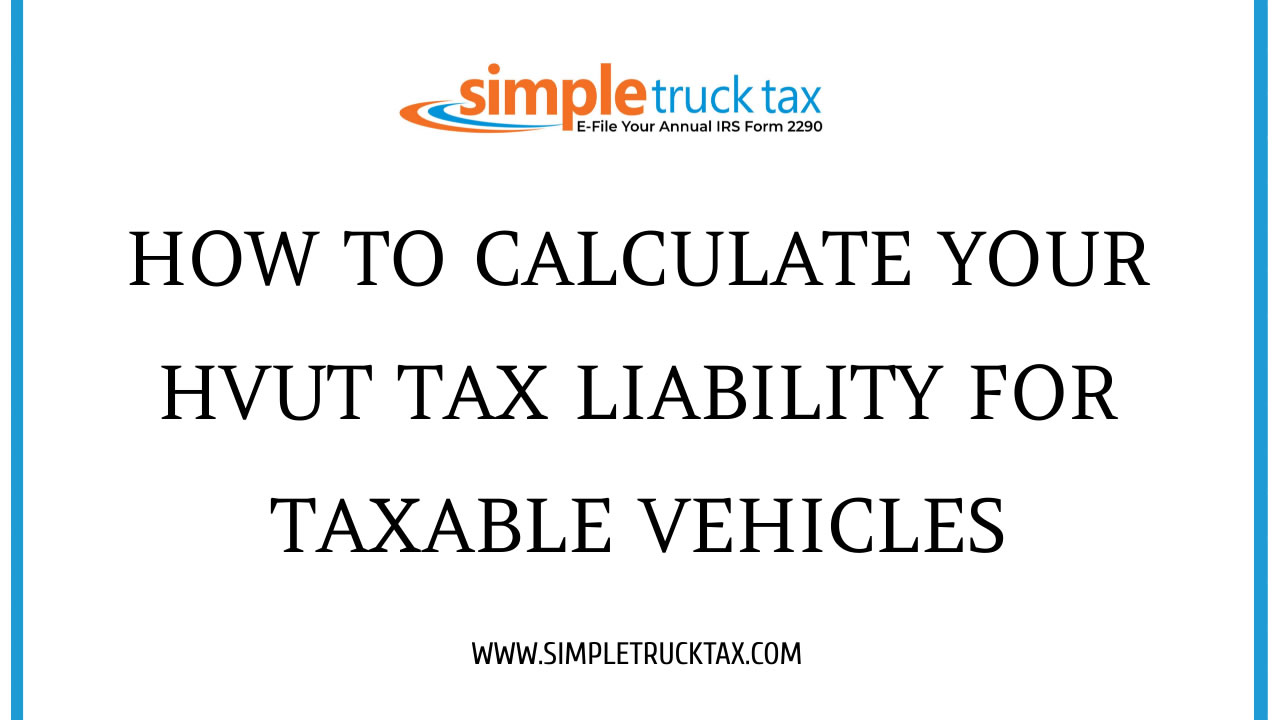
How to Calculate Your HVUT Tax Liability for Taxable Vehicles
If you own and operate a heavy vehicle that weighs over 55,000 pounds and operates on public highways, you are required to pay a Heavy Vehicle Use Tax (HVUT). The amount of HVUT you owe is based on the weight of your vehicle and the number of miles driven during the tax period. In this blog, we will discuss how to calculate your HVUT tax liability for taxable vehicles.
Step 1: Determine Your Vehicle's Taxable Gross Weight
The first step in calculating your HVUT tax liability is to determine your vehicle's taxable gross weight. The taxable gross weight is the total weight of your vehicle, including any trailers or semi-trailers, fully equipped for service. To determine your vehicle's taxable gross weight, take your vehicle's unloaded weight and add the weight of any trailers or semi-trailers that you attach to it.
Step 2: Determine Your Vehicle's Taxable Miles
The next step is to determine the number of taxable miles your vehicle has traveled during the tax period. The tax period for HVUT is from July 1st of the current year to June 30th of the following year. Taxable miles are the total number of miles your vehicle travels on public highways, excluding any miles traveled on private roads.
Step 3: Use the HVUT Tax Table to Determine Your Tax Liability
Once you have determined your vehicle's taxable gross weight and taxable miles, you can use the HVUT tax table to determine your tax liability. The tax table lists the taxable gross weight categories and the corresponding tax rates for each category. For example, if your vehicle's taxable gross weight is between 55,000 pounds and 75,000 pounds and you have traveled less than 5,000 miles during the tax period, your tax liability is $100.
Step 4: Account for Any Exemptions or Credits
There are certain exemptions and credits available that can reduce your HVUT tax liability. For example, if you use your vehicle for agricultural purposes, you may be eligible for an exemption. Additionally, if you have already paid HVUT on a vehicle that is sold or destroyed during the tax period, you may be eligible for a credit.
Calculating your HVUT tax liability for taxable vehicles requires determining your vehicle's taxable gross weight and taxable miles, and then using the HVUT tax table to determine your tax liability. It is important to account for any exemptions or credits that may be available to reduce your tax liability. If you have any questions or concerns about calculating your HVUT tax liability, be sure to consult with a tax professional.